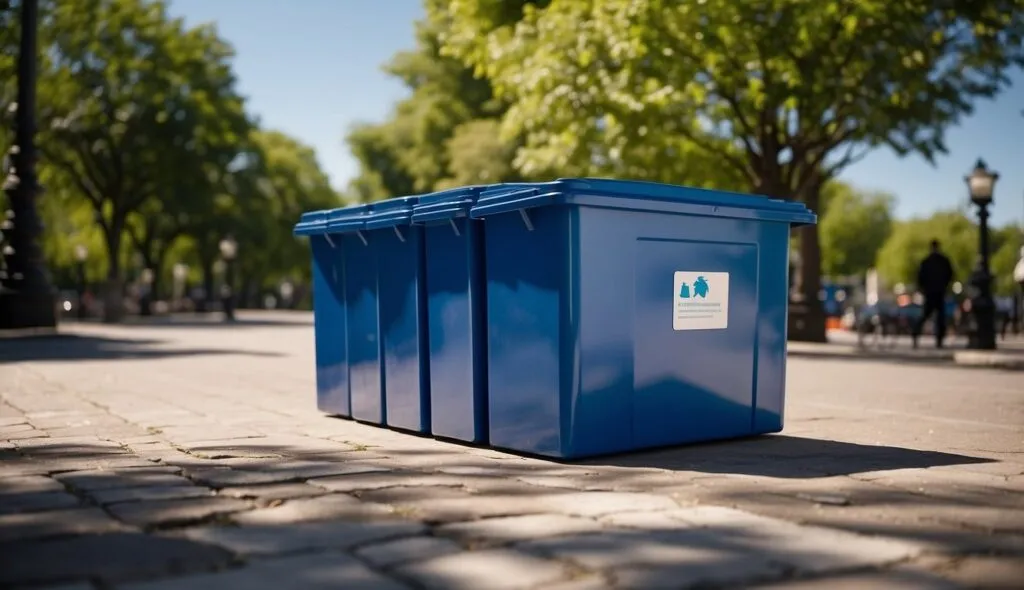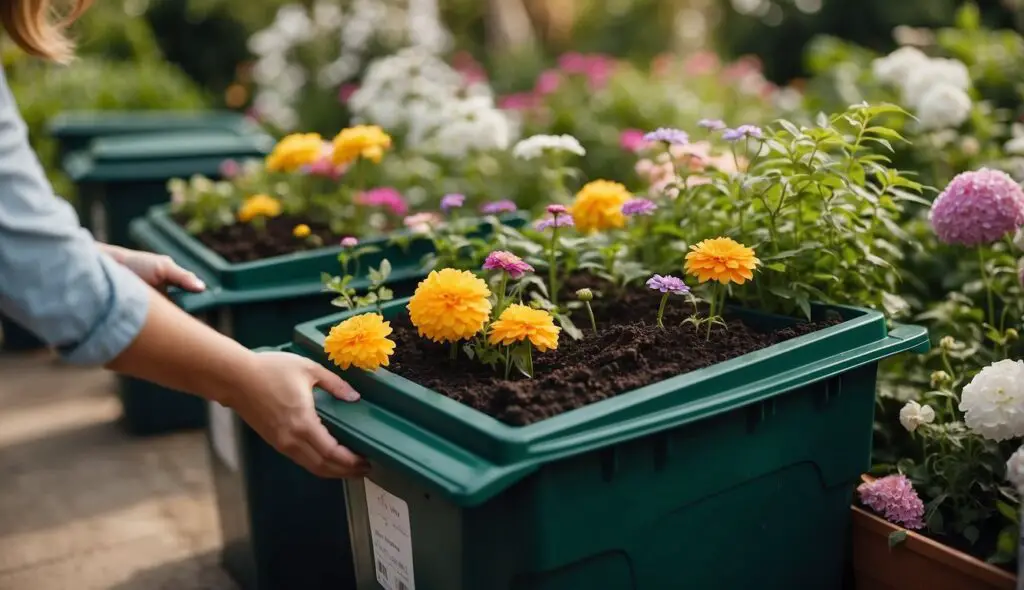As we continue to face the challenges of climate change, it’s more important than ever to consider our impact on the environment. One way we can do this is by repurposing items we already have instead of buying new ones. This not only reduces waste but also promotes sustainability by extending the lifespan of materials and reducing the need for new resources.

Understanding sustainability is key to making eco-friendly choices. Sustainability involves meeting the needs of the present without compromising the ability of future generations to meet their own needs. By repurposing items, we can reduce waste and minimize our environmental impact. Additionally, repurposing can also be a fun and creative way to decorate our homes while being mindful of our carbon footprint.
Table of Contents
Key Takeaways
- Repurposing items is a sustainable way to reduce waste and minimize our environmental impact.
- Sustainability involves meeting the needs of the present without compromising the ability of future generations to meet their own needs.
- Repurposing can be a fun and creative way to decorate our homes while being mindful of our carbon footprint.
Understanding Sustainability
Sustainability is the ability to maintain a balance between economic, social, and environmental factors to meet the needs of the present without compromising the ability of future generations to meet their own needs. We must strive to achieve sustainability by reducing our carbon footprint and greenhouse gas emissions, while promoting a circular economy.
A circular economy is a regenerative system designed to minimize waste and maximize the reuse of resources. It is an alternative to the traditional linear economy, which is based on the “take-make-dispose” model. In a circular economy, waste is considered a resource, and products are designed for reuse, repair, and recycling.
Reducing our carbon footprint and greenhouse gas emissions is crucial to achieving sustainability. We can do this by using renewable energy sources, such as solar and wind power, and by reducing our energy consumption through energy-efficient products and practices.
We can also promote sustainability by adopting eco-friendly practices, such as repurposing and upcycling. Repurposing involves taking an existing product and using it for a different purpose, while upcycling involves transforming waste materials into new products of higher value.
By adopting sustainable practices, we can reduce our impact on the environment and contribute to a more sustainable future.
Principles of Repurposing
At its core, repurposing is about taking old items and transforming them into something new and useful. Repurposing can take many forms, from upcycling to DIY projects, and it is a great way to reduce waste and be eco-friendly. In this section, we will discuss the principles of repurposing and how they can be applied to create sustainable and innovative designs.
The Art of Upcycling
Upcycling is the process of taking old or discarded materials and transforming them into something of higher value. It is a form of creative reuse that can be applied to a wide range of materials, from clothing to furniture. Upcycling is a great way to reduce waste and create unique and innovative designs.
When upcycling, it is important to consider the materials you are working with and how they can be transformed into something new and useful. For example, old clothing can be repurposed into new garments or accessories, while old furniture can be transformed into new and functional pieces.
DIY and Creativity
DIY projects are a great way to repurpose old items and create something new and useful. DIY projects can range from simple crafts to complex designs, and they are a great way to express creativity and reduce waste.
When embarking on a DIY project, it is important to consider the materials you are working with and how they can be transformed into something new and useful. For example, old glass bottles can be transformed into vases or candle holders, while old t-shirts can be turned into tote bags or pillowcases.
In conclusion, repurposing is a great way to reduce waste and create sustainable and innovative designs. Whether you are upcycling old materials or embarking on a DIY project, it is important to consider the materials you are working with and how they can be transformed into something new and useful. By embracing creativity and design principles, we can create unique and eco-friendly designs that are both functional and beautiful.
Materials and Their Impact

When it comes to eco-friendly repurposing, the materials we use and their impact on the environment are crucial considerations. In this section, we will explore the impact of plastics on oceans, as well as the use of natural resources and alternatives.
Plastics and Oceans
Plastics have become a major environmental concern, with millions of tons of plastic waste ending up in oceans every year. This has a devastating impact on marine life, with animals getting entangled in plastic waste or mistaking it for food. As a result, many animals die from ingestion or suffocation.
To combat this problem, we can repurpose and upcycle plastic waste into new products, reducing the amount of plastic that ends up in landfills and oceans. We can also use biodegradable plastics, which break down naturally over time and do not contribute to the buildup of plastic waste.
Natural Resources and Alternatives
Natural resources such as cotton and bamboo are often used in the production of clothing and other products. However, the production of these materials can have a significant impact on the environment, including deforestation, water pollution, and the use of harmful chemicals.
To reduce our impact on the environment, we can repurpose and upcycle existing materials, reducing the need for new production. We can also use alternatives such as recycled fabrics, which are made from post-consumer waste and require fewer resources to produce.
In addition, we can use natural alternatives such as hemp, which requires less water and pesticides than cotton and can be grown without the use of harmful chemicals. By using these alternatives, we can reduce our impact on the environment while still producing high-quality products.
Eco-Friendly Design and Decor
At the heart of eco-friendly repurposing is the desire to reduce waste and create a sustainable future. When it comes to design and decor, we can make choices that not only benefit the planet but also enhance our living spaces. By choosing eco-friendly materials and repurposing existing pieces, we can create a unique aesthetic that reflects our values and personality.
One of the key benefits of eco-friendly design is its value. By investing in high-quality, sustainable materials, we can create pieces that will last for years to come. This not only saves money in the long run but also reduces the need for frequent replacements. In addition, repurposing existing furniture and decor can add character and charm to a space, creating a unique and personalized look.
When it comes to furniture, choosing pieces made from sustainable materials such as bamboo, reclaimed wood, or recycled plastic is a great way to reduce our environmental impact. These materials are not only durable but also renewable, making them a smart choice for eco-conscious consumers. Additionally, upcycling old furniture can be a fun and creative way to breathe new life into tired pieces, giving them a new purpose and a fresh look.
In terms of decor, there are many eco-friendly options to choose from. From upcycled jewelry to natural finishes, there are plenty of ways to incorporate sustainable materials into our homes. For example, using natural finishes such as beeswax or plant-based oils instead of synthetic varnishes can reduce our exposure to harmful chemicals while also adding a beautiful, natural look to our furniture.
Overall, eco-friendly design and decor is a smart choice for those who want to create a sustainable and stylish home. By choosing sustainable materials, repurposing existing pieces, and incorporating natural finishes, we can create a unique and personalized space that reflects our values and helps protect the planet for future generations.
Challenges and Innovations
As we strive towards a more eco-friendly and sustainable future, repurposing and upcycling have emerged as powerful tools in our journey towards environmental conservation. However, there are still challenges that we must overcome to fully realize the potential of repurposing and upcycling.
One of the biggest challenges is the lack of awareness and education about the benefits of repurposing and upcycling. Many people still view waste as a problem rather than an opportunity for resourcefulness. We need to educate people about the environmental and economic benefits of repurposing and upcycling, and show them how they can actively participate in this movement.
Another challenge is the lack of infrastructure and support for repurposing and upcycling. It can be difficult to find the right materials and tools needed for these activities, and there is often a lack of funding and resources for community-based repurposing initiatives. We need to invest in the development of infrastructure and support systems for repurposing and upcycling, and encourage businesses and governments to support these initiatives.
Innovations in repurposing and upcycling are also emerging, providing new opportunities for environmental conservation and sustainable living. For example, there are now companies that specialize in turning waste materials into new products, such as recycled plastic composites for construction and automotive applications. These innovations not only reduce waste, but also create new economic opportunities and jobs.
Overall, while there are challenges to overcome, we are optimistic about the future of repurposing and upcycling. With continued education, investment, and innovation, we can create a more sustainable and resourceful world.
Conclusion
In conclusion, repurposing unwanted items is a sustainable practice that can significantly reduce carbon emissions. By repurposing, we can extend the life of products, reduce the amount of waste that ends up in landfills, and conserve natural resources.
Through upcycling and repurposing, we can create new and unique items from old materials, reducing the need for new resources and minimizing environmental impact. By adopting eco-friendly disposal practices, we can ensure that our discarded items are disposed of in a way that minimizes their impact on the environment.
Building sustainable habits is essential to reducing our carbon footprint and protecting the environment. By embracing repurposing and other sustainable practices, we can reduce our impact on the environment and help create a more sustainable future.
In conclusion, repurposing is a versatile practice with the potential to save money, reduce waste, and contribute to a more sustainable future. By repurposing everyday items at home or optimizing business processes, we can adopt an eco-friendly approach that benefits both our wallets and the planet.
Frequently Asked Questions

How can clothing be repurposed to minimize environmental impact?
Clothing can be repurposed in many ways to minimize environmental impact. Some ideas include turning old t-shirts into cleaning rags, transforming jeans into a tote bag, or using old sweaters to make cozy blankets. By repurposing clothing, we can reduce the amount of textiles that end up in landfills and save resources that would otherwise be used to produce new clothing.
What are some creative ideas for repurposing everyday items sustainably?
There are countless creative ideas for repurposing everyday items sustainably. For example, old glass jars can be turned into planters or storage containers, while empty wine bottles can be transformed into decorative vases. Furniture can also be repurposed by giving it a fresh coat of paint or repurposing it for a new use. By thinking creatively and outside the box, we can reduce waste and give new life to old items.
In what ways does repurposing contribute to the principles of Reduce, Reuse, Recycle?
Repurposing contributes to the principles of Reduce, Reuse, Recycle by extending the life of existing products and reducing the need for new ones. By repurposing items, we can reduce the amount of waste that ends up in landfills and conserve resources that would be used to produce new products. Repurposing also encourages us to think creatively and find new uses for old items.
Can you provide examples of how repurposing supports sustainability?
Repurposing supports sustainability in many ways. By repurposing items, we can reduce waste, conserve resources, and reduce our carbon footprint. For example, repurposing old furniture can prevent it from ending up in a landfill and reduce the need for new furniture to be produced. Repurposing also encourages us to think creatively and find new uses for old items, which can lead to a more sustainable and resource-efficient lifestyle.
How does repurposing differ from other eco-friendly practices?
Repurposing differs from other eco-friendly practices in that it focuses on finding new uses for existing products rather than producing new ones. While recycling and reducing waste are also important eco-friendly practices, repurposing encourages us to think creatively and find new ways to use old items. Repurposing can also be a more cost-effective and resource-efficient way to live sustainably.
What do the 4 R’s of sustainability entail and how do they relate to repurposing?
The 4 R’s of sustainability are Reduce, Reuse, Recycle, and Repurpose. These principles encourage us to reduce waste, conserve resources, and live more sustainably. Repurposing relates to the 4 R’s by encouraging us to find new uses for old items and extend their lifespan. By repurposing items, we can reduce waste and conserve resources, which supports the principles of sustainability.


